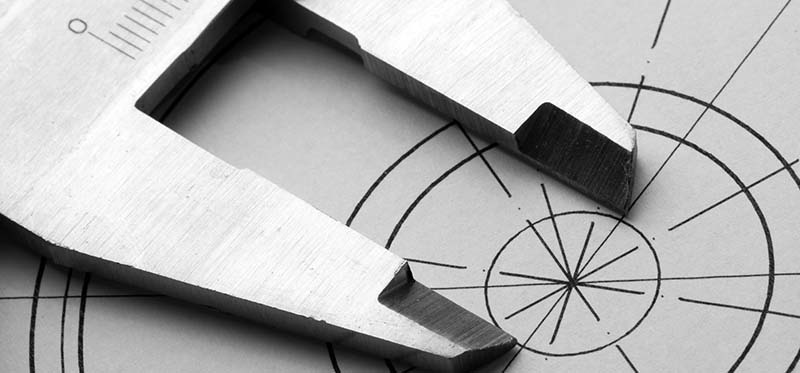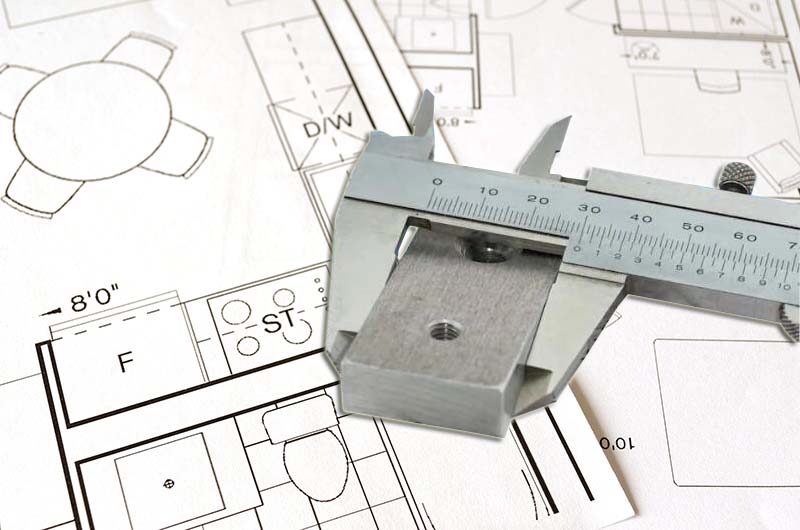In order to meet the interchangeability of parts in mechanical manufacturing, the size of the produced parts should be within the required tolerance range. This requires a unified standard for the form, size, accuracy and performance of a part. Similar products also need to be reasonably classified in size to reduce product series. This is product standardization. Therefore, the concept of specifying engineering tolerances and fits came into being.
In mechanical engineering, the tolerance sets the allowable deviation from the specified size. The use of tolerances helps to ensure that the final product is easy to use, especially if it is part of a larger assembly.
Failure to set tolerances in critical areas may result in parts that cannot be used according to design intent, because each manufacturing method has a certain degree of inaccuracy.
However, determining the appropriate tolerances can ensure that the manufacturing company knows to pay more attention to specific problems during the production process. There is a certain relationship between the working parts: free rotation, free longitudinal movement, clamping action, permanent fixed position. Accuracy is the accuracy required to ensure that the part performs as expected. Tolerance is the allowable variation of any given size to achieve proper function.
What Is Engineering Tolerance?
Engineering tolerances are the allowable deviations in measurements derived from basic measurements.
Assume that a 100 mm metal rod is processed. Even though all the steel bars are intended to be processed into the same shape, due to the size and direction of the steel bars, not all the steel bars can be manufactured to an accuracy of 100.00 mm. Although the design and manufacturing sites have been working hard to reduce such deviations, they still cannot be controlled to zero.
This size and shape deviation basically fluctuates up and down around the target value. Therefore, the upper limit value and the lower limit value of the upper limit value relative to the target size are determined based on the use of the metal rod. The difference (allowable range) between these two values is called “tolerance”.
Tolerances can be applied to many different units. For example, working conditions may have tolerances for temperature (°C), humidity (g/m3), etc. In mechanical engineering, the tolerances we mainly talk about apply to linear, angular and other physical dimensions. Regardless of the unit, the tolerance indicates the acceptable measurement range from the base point (nominal value).

Engineering Tolerance Types
Engineering tolerances include dimensional tolerances, shape tolerances and position tolerances.
Dimensional Tolerance
The dimensional tolerance is the allowable amount of change in the size. This is the basis of engineering tolerances. The maximum allowable value is called the maximum size. The minimum value is called the minimum dimension.
Tolerance is the absolute value of the algebraic difference between the maximum upper limit size and the minimum upper limit size, and the absolute value of the algebraic difference between the upper deviation and the lower deviation.
Lower Deviation
Adding a lower deviation tells the manufacturer how much a certain measurement value can be smaller. This is indicated by the “-” symbol.
Upper Deviation
The upper deviation is the opposite of the lower deviation. Add it to show how much larger the measured value can be than the nominal value.
Bilateral Deviation
The third way to give a tolerance range is to use a bilateral deviation.
In the case of the same basic size, the smaller the dimensional tolerance, the higher the dimensional accuracy. The specified tolerance indicates the requirement of manufacturing accuracy and reflects the difficulty of processing.
Shape Tolerance
(1) Straightness
Straightness is the condition for the actual shape of the linear elements on the part to maintain an ideal straight line. Also called straightness. The straightness tolerance is the maximum allowable deviation of the actual straight line from the ideal straight line. .
(2) Flatness
Flatness is a representation of the actual shape of the part’s plane elements to maintain an ideal plane. This is commonly referred to as flatness. Flatness tolerance is the maximum amount of change allowed by the actual surface relative to the plane.
(3) Roundness
Roundness is the condition that the actual shape of the part element is equidistant from its center. Roundness is usually called roundness. The roundness tolerance is the maximum allowable deviation between the actual circle and the ideal circle in the same section.
(4) Cylindricity
Cylindricity refers to the points on the contour of the cylindrical surface of the part, and keep its axis equidistant. Cylindricity tolerance is the maximum allowable variation of the actual cylinder surface to the ideal cylinder surface.
(5) Line profile
The contour of the line is a curve that represents an arbitrary shape on a given plane of the part and maintains its ideal shape. The contour of the line tolerance is the allowable variation of the actual contour of the non-circular curve.
6) Surface Profile
The surface profile is the surface of any shape on the part to maintain its ideal shape. The contour of the surface tolerance is the allowable deviation between the actual contour of the non-circular surface and the ideal contour.
Position Tolerance
Position tolerance refers to the total amount of change allowed for the position of a specific element relative to the datum. It is another important parameter of engineering tolerance.
(1) Orientation Tolerance
Orientation tolerance refers to the total amount of change in the direction allowed by the reference related to a particular element. This tolerance reflects parallelism, perpendicularity and angle.
(2) Position Tolerance
The position tolerance is the full range of variation in the position that allows the actual element to be associated with the reference. Such tolerances include concentricity, symmetry, and position.
(3) Runout Tolerance
Runout tolerance is a tolerance item given according to a specific test method. Runout tolerance can be divided into circular runout and total runout.

Fit
There are many different options for shaft and hole fits, and tolerances are always required to get the correct fit. In mechanical assembly, the relationship between the hole of the same basic size and the tolerance zone of the shaft is called a fit. Since the actual size of the hole and the shaft are different, clearance or interference will occur after assembly. In the fit between the hole and the shaft, when the algebraic difference of the hole size minus the shaft size is positive, it is the clearance, and when it is negative, it is the margin.
There are three types of shaft hole engineering fits.
Clearance Fit
This fit requires the shaft diameter to be smaller than the hole diameter. This means that there will always be a gap between the two.
If the engineering solution requires the two to be able to slide or rotate independently of each other, this is the way to go.
Therefore, in this case, both the shaft and the hole have tolerances that can ensure non-overlapping.
Transition Fit
This option means that the maximum shaft size is greater than the minimum hole size. At the same time, the minimum shaft size is also smaller than the maximum hole size.
So it is neither a clearance fit nor an interference fit. According to the final measurement results, the tolerance allows two situations to occur without entering extreme situations.
Interference Fit
Here, the shaft diameter is always larger than the hole. Even when the shaft is at its smallest diameter and the hole is at its largest.
The interference fit ensures that there is no movement between the two parts. Forces need to be applied during the physical assembly process. Heating holes, freezing shafts, and using lubricant all help simplify the process.


